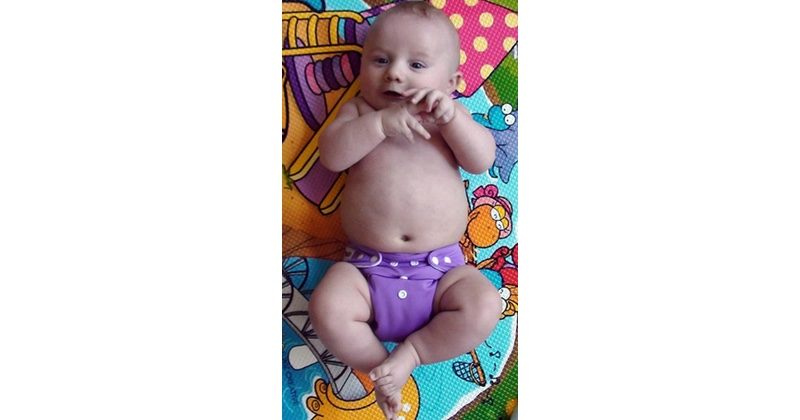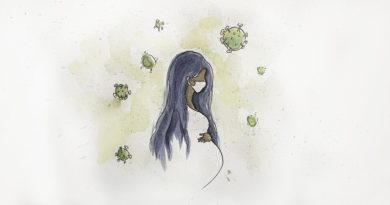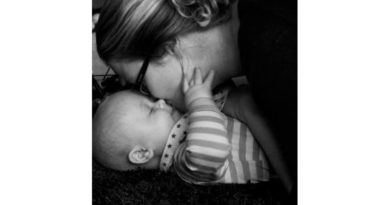Nappies 101: Cloth or Disposable?
Prepare at least two weeks’ worth of wholesome freezer meals.”
“Pack your hospital bag well in advance of your due date.”
“Stock up on several months’ supply of nappies and wipes in bulk!”
This was the sort of advice I found myself reading online while expecting my first baby, and I was excited yet terrified. There were tough times ahead, and I needed to prepare for the impending chaos! Needless to say, I didn’t even consider using cloth nappies; after all, life was about to turn upside down, and the last thing I needed was a bigger laundry pile.
Fast-forward to my second pregnancy: My first baby was now almost three years old and his childminder (an eco-warrior friend of mine) tentatively asked if I’d consider using cloth nappies this time round. It hadn’t crossed my mind, but before saying no, I decided to do some research. I was soon taken in by the Instagram-worthy colours and gorgeous patterns. I decided I wouldn’t mind giving them a try, although I was a little overwhelmed by the huge variety of options available. Not long afterward, my friend surprised me with a big box of lovely, soft, cloth nappies she’d found secondhand in excellent condition – one touch of the fluffy bamboo and I was converted! I was also oddly excited about the neat stack of cloth wipes in bright rainbow colours.
With the help of Facebook community groups, lots of online FAQ pages, and a loan from my local nappy scheme, I eventually felt like an expert. This is my brief guide, and there’s plenty more information out there if you’d like to learn more:
The four main types of cloth nappy
- Terry nappies and prefolds: these are the traditional rectangular/square towels, secured with a clip and a waterproof wrap worn on top to prevent leaks.
- Fitted nappies: these are more recognisable nappy-shaped nappies, usually fastened with velcro. The entire nappy is made from a soft absorbent material, and again, a waterproof wrap goes over the top. You can add a soft fleecy liner, which wicks moisture away from the skin.
- Pocket nappies: these are like thin “empty” nappies fastened with velcro or poppers, with an opening that you stuff with an absorbent insert.
- All-in-one nappies: these are probably the easiest for new cloth nappy users, as there are no separate inserts or covers, so they’re more similar to disposable nappies in their use.
There are many other small variations between brands, such as different materials and fastenings, and just like disposables, it’s often a case of experimenting a little to decide which kind you like best.
How to wash cloth nappies: Store soiled nappies and wipes in a wetbag or a lidded bin/bucket; there’s no need to soak. Prewash nappies at 30-40° C to remove the worst of the soilage, followed by a long 60°C cycle with a full dose of detergent. Hang in the sunshine for a few hours occasionally to magically make any stains disappear.
The advantages of cloth over disposable:
I must admit that I’m no hippy, and I’ve always been a little lazy about making any big eco-friendly lifestyle changes in the past. However, when I realised that my own decades-old disposable nappies are still out there festering away in a landfill somewhere in England, in addition to the hundreds used by our first son, I felt disgusted. The environmental benefit was a big selling point for me.
Cloth nappies and wipes are also…
- gentler for babies’ delicate skin.
- cost effective over time, especially with the cost of household waste disposal in Switzerland.
- available in a huge range of gorgeous patterns and colours.
Why I went back to disposables:
Before moving to Switzerland this year I sold my entire stash of cloth nappies, purely for convenience during the move and as part of an effort to minimise our possessions. My guilt about the environmental impact is eased by the knowledge that waste in Switzerland is burnt for energy rather than dumped into a landfill site.
However, I’ve continued to use cloth wipes at home. They are cost saving, they actually work better than messy disposables, they’re easy to wash, and I’m convinced they’re the reason my 18-month-old has never had nappy rash. I’d encourage anyone who is undecided about cloth nappies to at least give cloth wipes a try.
Although I’ve returned to disposable nappies for the convenience, I’m sure there is still some environmental impact involved in the production and incineration of all those disposable nappies. The extra washing wasn’t really that hard, and I truly miss the softness, the colourful patterns, and the strange satisfaction of seeing a row of bright, clean nappies on my washing line on a sunny day, fluttering in the breeze.
By Rebekah Egli
Rebekah is a British expat living beside Lake Zurich with her Swiss husband and two young boys. Formerly a UX Designer, she is now a stay-at-home mum negotiating the Swiss schooling system, forging new friendships, and learning Swiss German. She is a self-professed geek with an interest in social and political issues, and spends far too much time reading and fact-checking the news. Her blog can be found here.
Photo credit: Wikipedia_Attribution UserDoneuron




